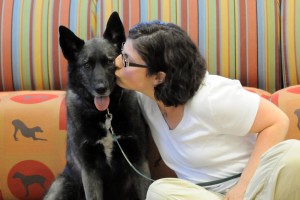-
Recent Posts
Archives
- October 2022
- August 2022
- May 2022
- March 2022
- January 2022
- December 2021
- September 2021
- July 2021
- June 2021
- May 2021
- April 2021
- February 2021
- January 2021
- November 2020
- October 2020
- September 2020
- June 2020
- April 2020
- March 2020
- February 2020
- January 2020
- December 2019
- November 2019
- October 2019
- September 2019
- June 2019
- March 2019
- February 2019
- January 2019
- December 2018
- November 2018
- October 2018
- August 2018
- July 2018
- June 2018
- May 2018
- April 2018
- March 2018
- February 2018
- January 2018
- December 2017
- November 2017
- October 2017
- September 2017
- August 2017
- July 2017
- June 2017
- May 2017
- April 2017
- March 2017
- February 2017
- January 2017
- December 2016
- November 2016
- August 2016
- July 2016
- June 2016
- May 2016
- April 2016
- March 2016
- February 2016
- January 2016
- December 2015
- November 2015
- October 2015
- September 2015
- August 2015
- July 2015
- June 2015
- May 2015
- April 2015
- March 2015
- December 2014
- June 2014
- May 2014
- April 2014
- November 2013
- September 2013
- August 2013
- July 2013
- June 2013
- May 2013
- March 2013
- January 2013
- November 2012
- October 2012
- July 2012
- December 2011
- November 2011
- October 2011
- September 2011
- August 2011
- July 2011
- June 2011
- May 2011
- April 2011
- March 2011
- February 2011
- January 2011
- December 2010
- November 2010
Categories
Advice on Training your Dog
January is Train Your Dog Month. Jean Tomaselli is our certified veterinary technician in the Behavior service and a dog trainer. She has provided tips for families considering training their new pet.
My dual careers as both a professional animal trainer and a veterinary technician began in the mid-1980s. Over the years, experience has changed the way I train and present information to my clients. As a positive reinforcement trainer who specializes in aggression problems, I need to meet my clients’ needs by giving them useful information in a short amount of time. The dog’s life is often at stake. These are loving owners, most with families and busy careers. They have limited time and energy to devote to their pet. Helping dogs with problems is more about being dog savvy – more of a lifestyle change and less about training than you would think. The more dogs that you love in your lifetime, the more dog personalities you will encounter. You need to understand the needs of this dog, which may not be the same as your last dog. You will see better outcomes if you stay engaged and involved with your dog’s emotional responses to the world. Even if you can only devote a few minutes per day, you should expect to put that time in every day even when your dog is older.
Here are the first things to consider.
How to know when your dog needs training
All of us can agree that the the dogs with which we live need to have some manners and be enjoyable to have around! Domestic dogs sometimes do things that don’t seem to fit our expectations. Many of these behaviors can be a nuisance or even a safety issue when dogs live in a human world. Barking, destructive chewing, and using the house as a restroom can make life with a dog stressful, but barking and chewing and pooping are just a normal part of being a dog. Dogs can also develop behaviors that are dangerous, which can lead to hurting themselves or the humans with which they interact. So when do you start?
 Don’t delay your training until your puppy reaches a certain level of maturity. Don’t delay training until your puppy finishes getting his vaccinations. Don’t delay training because you think there will be a better time or that you will have more time for it later. Do it today! Train for a few minutes every day to create a habit. Make each walk a training walk, train a little bit before each meal that you feed your dog, make every interaction a possibility for learning. When using positive reinforcement training, you do not need to wait until a puppy reaches a certain age because positive reinforcement should be fun for the puppy, like playing a game. As long as you are seeking venues for training that insist upon positive methods, do a variety of things: puppy classes, beginner classes, and personal training. Consider a sport or activity to do together with your dog. Don’t give up on those old dogs either, there are many older dogs out there at ten, twelve and even older that still compete in sports, search and rescue, etc.
Don’t delay your training until your puppy reaches a certain level of maturity. Don’t delay training until your puppy finishes getting his vaccinations. Don’t delay training because you think there will be a better time or that you will have more time for it later. Do it today! Train for a few minutes every day to create a habit. Make each walk a training walk, train a little bit before each meal that you feed your dog, make every interaction a possibility for learning. When using positive reinforcement training, you do not need to wait until a puppy reaches a certain age because positive reinforcement should be fun for the puppy, like playing a game. As long as you are seeking venues for training that insist upon positive methods, do a variety of things: puppy classes, beginner classes, and personal training. Consider a sport or activity to do together with your dog. Don’t give up on those old dogs either, there are many older dogs out there at ten, twelve and even older that still compete in sports, search and rescue, etc.
How to identify a good trainer
There are a lot of things to look for in a good dog trainer. A good trainer knows the local board-certified veterinary behaviorist and will work with the behaviorist when needed. A good trainer carries accreditation with governing organizations that are respected among the positive reinforcement and veterinary behavior community. A good trainer keeps up-to-date on training methods and is not afraid to refer you to someone else if the problem you are having is beyond their level of experience.
Management – Enrichment – Education
My mantra for living successfully with dogs is MANAGEMENT-ENRICHMENT-EDUCATION. If you are not managing your pet correctly, your efforts to train a dog may be wasted. Here’s an example of a good management practice: Dogs often find the front door exciting – A knock, a doorbell, people who may be unfamiliar and carrying packages. Everything is exciting as people enter! It’s easy for dogs to become worked up at the front door. By going to the front door repeatedly without guidance, a dog can learn how to be unruly or aggressive at the door. To practice good management, simply put a dog or puppy away (in a safe place) whenever guests are expected. This will allow for you to bring your puppy or dog back (perhaps on leash and with training in mind) into the social situation and after the doorway excitement has dissipated. Learning how to be a good manager of your canine friend will keep them out of trouble and prevent them from developing bad habits in the first place. Crate training with the goal of teaching a dog that a crate is a good place, and the utilization of gates to prevent dogs from going into other areas of the house, can prevent your pet from getting into trouble or engaging with other pets or children unsupervised. Management is everything, and as a trainer I expect dogs to act like dogs no matter how much training they have.
| “You can’t expect a dog that is under-stimulated or under-exercised to be able to live well in a home.” |
Enrichment is also a vital part of living successfully with any dog. Enrichment is a piece that must also be in place for training to be successful. Enrichment is anything that you do with or for your dog that improves their quality of life or mentally stimulates them in good ways. Taking your dog for a walk or a hike has great benefits for many dogs. Spending time training for a few minutes or rigging up some homemade agility equipment in the backyard can also be considered enrichment. Food enrichment or eating from food toys is also incredibly powerful. My dogs (the dogs of a lifelong professional trainer) never eat food out of a bowl. All of their meals (dry dog food, wet dog food and treats) either come from my hands during training or comes from a food dispensing toy such as a Kong. When I present my dogs with their meals, their eyes light up, because they don’t just eat, they play with their food! Many dogs need to be taught how to use food toys, so don’t expect every dog to get it instantly. Meeting your pet’s species-specific needs must be in place in order for training to be successful. The bottom line is you can’t expect a dog that is under-stimulated or under-exercised to be able to live well in a home.
Getting started with training
Teaching your dog language and skills never ceases throughout the life of the dog. Dogs are never finished with training! They need constant refreshers, new skills and new learning for the situations that arise in an ever-changing life. The benefits of training your dog are endless. A few minutes of clicker training and progressive positive reinforcement every day can satisfy your dog’s need for human interaction, and you will both enjoy this time well spent. Don’t underestimate tricks – the more fun things a dog knows, the better that dog will be able to function in the human world.
You can always set up an appointment with us if your pet is having concerning behavior issues. And for those dogs new in your life, get started right away with a lifetime of training! All the best to you and your new family member!
Learn more about the Behavior service at NorthStar VETS
Find a trainer at PetProfessionalGuild.com/
 Jean L. Tomaselli CVT, ABTA, ABC
Jean L. Tomaselli CVT, ABTA, ABC
Jean Tomaselli is a part of the NorthStar VETS team and has been a behavior technician at Northstar VETS since 2011.
This entry was posted in Pets, Veterinary Medicine and tagged dog training, Jean Tomaselli, NorthStar VETS. Bookmark the permalink.





Leave a Reply